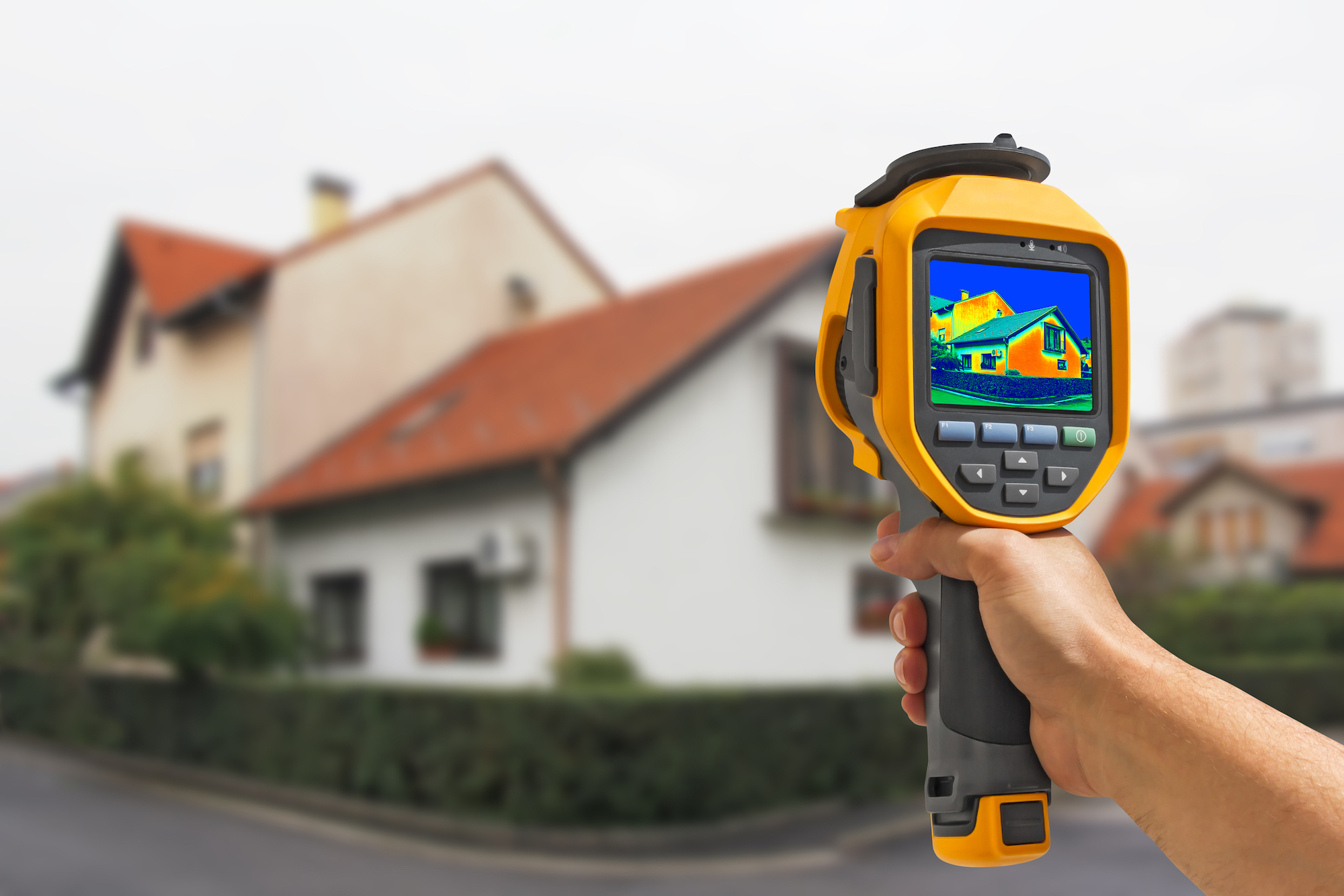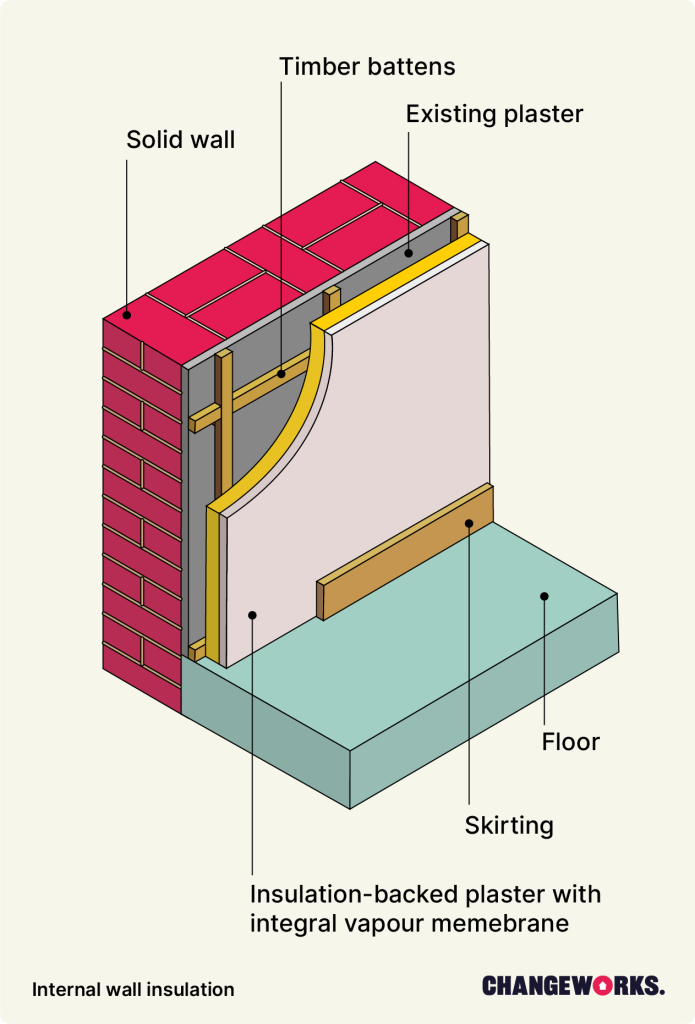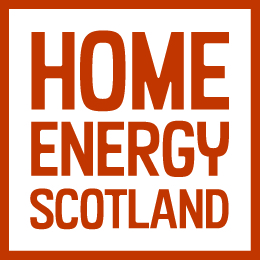Internal Wall Insulation
Internal Wall Insulation (IWI) involves adding a layer of wall insulation to the inside of your home. It’s an effective way of reducing heat loss in buildings with solid walls.

What is Internal Wall Insulation (IWI)?
The best way to improve the energy efficiency of your home’s solid (non-cavity) walls is by adding solid wall insulation. There are two ways to insulate a solid wall:
- Internal wall insulation.
- External wall insulation.
With internal wall insulation, installers add insulation to the inside of your exterior walls. Whilst external wall insulation is like putting a jacket on your property, internal wall insulation is more like putting on a thick vest.

How does Internal Wall Insulation work?
The installation process
There are several different kinds of Internal Wall Insulation, and different ways to install it. You can find out more about these below. Whichever method or materials are used, the process involves adding a layer of insulation in any rooms with an exterior wall.
The insulation materials
Solid walls are usually made from stone, brick, or concrete, all of which conduct heat really well. As a result, heat is easily lost from your home, passing from the indoors, through the exterior walls, to the outdoors. On the other hand, insulation conducts heat poorly. Therefore, by adding a layer of insulation to your walls, heat stays trapped inside your home for longer.
The different types of IWI mentioned below use a range of materials. To find out how effective the insulation is likely to be, you can check its U-value. U-values measure how easily heat passes through a material. The lower the U-value of the insulation, the more effectively it keeps heat inside your home. As a result, in terms of cost, you can expect the price to go up as the U-value goes down.
Rigid insulation boards come in different materials and thicknesses. Fitting them is like fixing large tiles to your walls. They are secured in place with adhesive and reinforced with “mechanical fixings” i.e. screws or bolts. Some types of board already have a plasterboard layer attached, so there’s no need to plaster over the top.
The installer fixes a series of battens (frames) to the wall and fills them with mineral wool fibre. They will then plaster over the insulation.
This is essentially thermal wallpaper, which you buy in rolls and hang like normal wallpaper. Although it probably won’t keep the heat in as well as other types of insulation, it is something you may be able to install yourself if you’re handy around the home.
This is plaster with insulation mixed in. It’s often clay or lime-based, and the insulating material is cork. As with other plasters, you mix insulated plaster with water and apply it to the walls.
Pros and cons of Internal Wall Insulation
- Usually cheaper than External Wall Insulation
- A good option if you can’t make changes to your home’s exterior
- Slightly increases the thickness of your walls, so reduces area
- Can be quite disruptive to install
Internal Wall Insulation: What to consider
As with any retrofit work, it’s important to take certain factors into account before going ahead with IWI. By doing so, you’ll be best placed to benefit from the insulation once the work is completed.
We’ve listed some things to consider below:
Breathable internal wall insulation
However you choose to insulate your internal walls, it’s important to make sure that the method and materials don’t cause damp or mould issues.
If you’re insulating an historic building, the materials you use should be ‘moisture open’. This helps avoid problems with damp because the insulation lets moisture pass through the wall.
Additionally, you may also need to install extra ventilation so that moisture doesn’t build up indoors.
IWI guarantees and credentials
Solid Wall Insulation (including IWI) should come with a 25 year guarantee. This is usually backed by the Solid Wall Insulation Guarantee Agency (SWIGA). Check with your installer that they offer this guarantee with the work.
Insulation will also be rated for fire-safety, moisture resistance and soundproofing. When asking your installer about the insulation’s U-value (as explained above), check these credentials too.
Funding for Internal Wall Insulation grants
Although generally cheaper than External Wall Insulation, Internal Wall Insulation can still cost between £5,000 and £12,000.
The Home Energy Scotland Grant offers up to £7,500 of grant funding for internal wall insulation. An optional extra £2,500 is available as an interest-free loan.
To find out more about the Home Energy Scotland Grant, call free on 0808 808 2282 to speak to an energy advisor.
Internal wall insulation is also one of the measures offered through several Energy Efficient Scotland: Area Based Schemes (EES: ABS). EES: ABS use Scottish Government funding to improve the energy efficiency of homes. Since the government funds these schemes, the internal wall insulation is free, or heavily discounted.
To see if EES: ABS for Internal Wall Insulation is available in your area, contact your local council.
Internal Wall Insulation FAQs
This will depend on what method you use. For example, flexible Thermal Lining is not very disruptive as it’s essentially wallpapering. On the other hand, any method that involves plastering will mean that some dust is produced, whilst any method that involves drilling creates noise. With this in mind, a reputable installer will try to minimise disruption. For example, all rooms should be sheeted up properly to protect them against dust.
How long the install takes depends on the size of the property. A typical timeframe is three to five days.
It is also important to note that certain methods of internal wall insulation will make your rooms smaller by a few centimetres. With dry lining and insulation boards, the walls will protrude a little further into the room. Skirting boards, cupboards and radiators will have to be removed and refitted as part of the process.
Yes. Internal wall insulation is fitted to the inside of your property. As a result, there’s no need to insulate the whole block as there is with external wall insulation, or all the flats above and below you, as there is with cavity wall insulation.
Again, this will depend on the method used, as well as the size of your property. For example, dry lining or adding insulation boards to a three-bed semi-detached house typically costs around £8,500.

Changeworks delivers Home Energy Scotland in the south east and Highlands and Islands on behalf of the Scottish Government and Energy Saving Trust.
As well as providing free, impartial expert advice to thousands of people every month to help them to keep warm in their homes for less, they identify funding opportunities for households seeking to install energy efficiency measures.
For more information, give Home Energy Scotland a call on 0808 808 2282 or email and the team will be happy to help you.
Useful pages
Is this page useful?